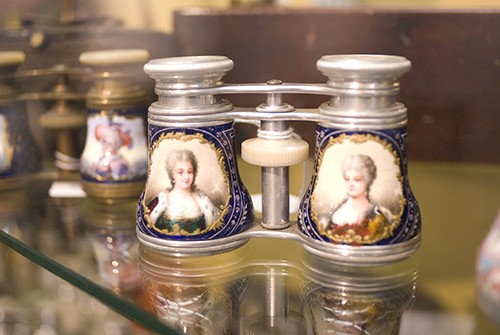Optical Sciences and opthamology professor John Greivenkamp started collecting antique telescopes eight years ago to help his students “”learn the basics of optics.””
Last week, what College of Optical Sciences Dean Jim Wyant calls Greivenkamp’s baby, the more than 400-piece set evolved from a collection to a museum.
“”It makes it a nice, attractive complement to the traditional program that we’re doing here,”” said Greivenkamp, who is also the founding curator of the museum. “”Once I started the collection, it really became a passion.””
Along with a Bisbee, Ariz., retiree, Greivenkamp organized the pieces that can be seen through a self-guided tour starting in the lobby on the third floor.
“”It’s brought in a lot of visitors and we hope it brings in a lot more,”” Wyant said.
Two sculptures, the “”Desert Flower”” and “”Sphere”” along with an 1850 wooden telescope barrel and a 1907 camera reside at the building entrance. The tour then goes to the eighth floor’s open-air patio windows adorned with antique optics. Down through the seventh, six, fifth and fourth floor of the optics building lie portraits of optics pioneers including Aden B. Meinel for who, the building is named, a dedication to a Nobel Prize-winning faculty member Nicolaas Bloembergen and gallery items from the 1700s to today ranging from military telescopes, ivory monoculars, precursors to modern-day binoculars and British daguerreotypes, thought to be the first device capable of creating a photographic image.
“”That first telescope led to another telescope which led to another telescope,”” Greivenkamp said. “”I realized that I had lost touch with some of the history as well. By going through this, I educated myself.””
This historical perspective is important to the mission of optical sciences, he said. “”As engineers, it’s important to know where you’ve been to know where you are going, to know where the pieces fit together.””
Most of the collection was procured through eBay auctions and English antique dealers who specialize in optics equipment. Greivenkamp, who had the original idea for the collection and still maintains it, holds the discretionary funding through various industrial donors to continue to add to the collection.
He said adding depth and breadth to the museum would serve best its mission to show “”the beauty of the science and engineering of light.”” Broadening the museum to include telescopes dating further back into the 1600s and more photography equipment and scientific instruments would strengthen the collection, according to Greivenkamp.
He also said that no matter the background of the viewer, whether involved in optics or not, the museum has something for them to enjoy — and that with time, he hopes more people will join him in expanding the museum.
“”It’s more than a collection, it’s a museum,”” Greivenkamp said. “”We hope that eventually donors will look here for a good home for some of their treasures.””









